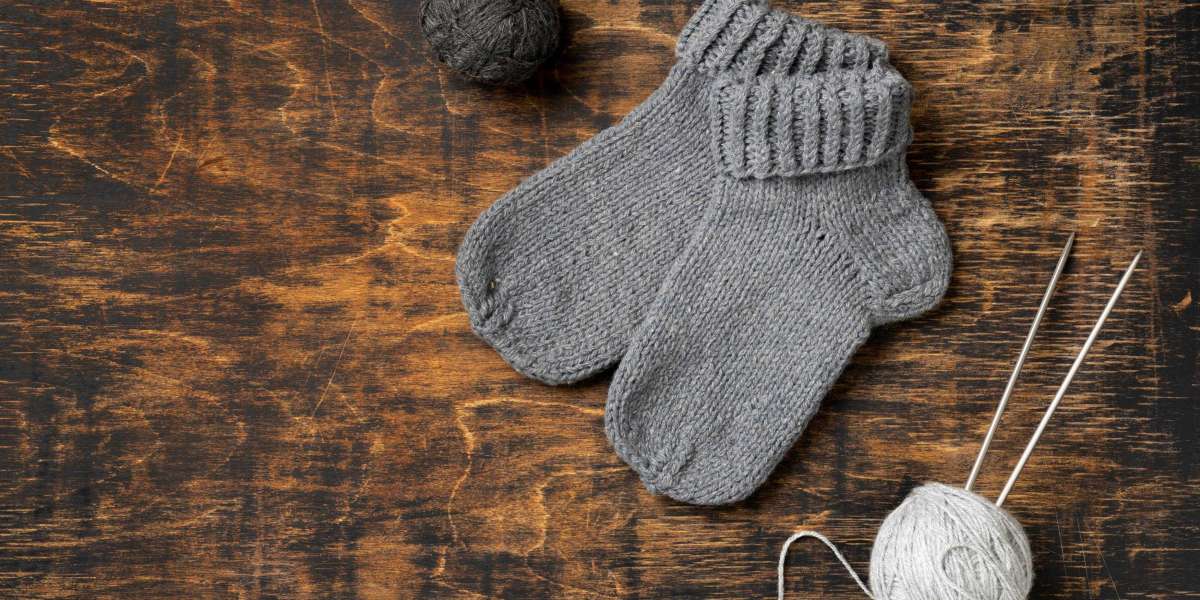Socks are easy knitting projects once you get the hang of them. Be it a gift for any person or season, a pair of socks are wonderful. You can knit a pair of socks with any knitting needles. Knitting a seamless pattern is the best option as there will be no edge to the seam.
Socks can be knitted with any set of double-pointed knitting needles, using three or four DPNs for the circumference and knitting with the extra needle. Or, you can work with circular knitting needles. For socks, the options are either a circular in length smaller than the sock circumference or an extra-long length for the magic loop or even two circulars to knit two at a time.
After you decide upon the knitting needles type, choose a size that matches the yarn weight. You can choose the size from the yarn label or the knitting pattern. For knitting, you can work top-up or cuff-down. Knitting socks toe-up is a great way to work on the project. Many knitters feel that they go faster than cuff-down socks, and because you can try them on at every stage, they are sure to fit perfectly. Before you begin make sure to have the correct size measurements. If the project is for yourself and you are knitting for the first time, start by measuring your foot, ankle, and the length. Here’s a quick chart.
(U.S. Shoe Sizes) |
4 - 6½
| 6 - 8½ | 7 - 9½ | 9 - 11½ | 10 -12½ | 13 -14 |
Foot Circumference (inches) | 7 | 8 | 8 | 9 | 9 | 10 |
Sock Height |
6½
| 7½ | 7 | 8 | 7½ | 8½ |
Total Foot Length | 8 | 9¼-10 | 9¼-10 |
10¼-11
| 10¼ -11 | 11¼-12 |
Yarn
Socks can be easily worked with multiple yarn colors. If you have been knitting or even crocheting for years, you’ll certainly have a lot of stash that can be used for the project. If you are a new knitter, get yourself a skein of self-striping sock yarn from your LYS.
Instructions
Knit a Gauge Swatch – If you are working on a pattern or working on your own design, start by knitting a gauge swatch. Basically with the knitting needles and yarn you’ve chosen for the sock project, make a square of around 6-10 inches. Wash and block the swatch. Calculate the gauge if it matches your pattern. Make changes to the knitting needle size to get the correct gauge. If you are planning your design, the swatch will give an idea of how the knitted fabric will look like, how much yarn will be needed and more.
Cast on - You start with Italian cast on or Turkish cast on. Of late, the magic cast on is a preferred way to begin. Choose any of the invisible cast on methods for the foundation row. You’ll only need to cast 16-20 stitches for the toe shape. You can choose DPNs or the circular needles. For DPNs, you can work with two needles as there are very limited stitches. For circulars, the magic cast on works wonderfully. Place a stitch marker to mark the start or end of the round.
After you’ve cast stitches, knit 2 rounds. You can start with the Stockinette stitch pattern right from the start too.
Later, include knitting increases for growing the stitches. You can choose to KFB (knit back and forth) to increase the stitch count.
After a row of knitting increases, knit a round normally.
Alternate the rows (knit and increases) all the way along the toe until you have 60 stitches.
Foot
Knitting the foot of the socks is simply following the stitch pattern. There are no increases for this section as you can work with the 60 stitches on your needles. Knit the part about 2 inches shorter than desired foot length.
Heel Turn
The heel turn is where the sock body takes shape. The stitches that will be part of the heel, changes direction. The heel turn can be knit with any method. It can be easily made with short rows techniques. Worked partway gives it shape and direction.
Put 30 stitches onto one needle for the heel flap, and 15 on each of two other needles for the instep. If you are working on circulars, you can either switch to DPNs or use the needle tip to hold the stitches. You will work back and forth on just the flap stitches to shape the heel.
The short rows works on the Stockinette pattern where you can wrap and turn the stitches. Make sure that the short rows are invisible to the eye and properly hidden in the stitches.
Leg
After you’ve worked the shape of the heels, rejoin the stitches and continue working in the round.
Knit the stockinette stitch pattern for 6 inches or more (according to the length of sock leg).
Cuff
Work the end of the leg with a rib stitch pattern. Rib stitches are basically a combination of knit and purl stitches. You can choose to work a k1, p1 rib or a k2, p2 rib or even a k3,p1 rib stitch.
Finishing
Bind off loosely. Weave in ends with your finishing needles.
Whether you knit socks toe up or cuff down, with DPNs or circular needles, Lantern Moon offers premium knitting needles for your project. Handcrafted by skilled artisans, the tools and accessories offer a smooth knitting experience for all projects.
Source by- https://lanternmoon.blogrip.com/2023/04/21/how-to-knit-socks-toe-up/












